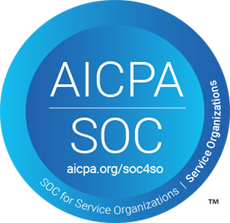The ONC defines interoperability as “the ability for two or more systems to exchange health information and use the information once it is received.” There’s a lot to unpack here… For starters, the term “interoperability” makes a lot of providers cringe given how many headaches have been caused in the name of this pursuit in healthcare. And the second part of that definition, making the information usable to providers, is a whole other conversation in and of itself. We’ve been outspoken that caregivers shouldn’t bear the burden of interoperability in healthcare, but it’s worth bringing some focus into how post-acute providers in particular are having to jump through extensive hoops to try to be interoperable with mainstream, acute providers and health systems.
Physician Peers Perceive Burnout with Technology Driving More Problems Than Solutions
A recent article in Medical Economics highlighted how technology can exacerbate and even create elements of physician burnout. What was interesting to note is how the physician interviewees categorized smaller and independent physicians (similar to post-acute providers working in skilled nursing, physical therapy, home health, etc.) as most at risk for burnout. It seems a common theme that providers are most rewarded when they can actually practice medicine, working with patients and providing care. What has overwhelmed post-acute providers (and their healthcare staff) is the cumbersome administrative tasks and basically all the other stuff that precludes them from giving attention to patients.
Astutely identified is the reality that many providers in post-acute care settings are one man/one woman shows…they do the patient care, the administrative work, the billing, managing referrals, etc. There are not enough hours in the day, especially for providers chasing multiple, disjointed communication channels, to stay abreast of all the activities required to stay relevant in value-based care models. The “little guys” are disproportionately feeling the pain of interoperability – seemingly for the sake of interoperability – without experiencing any benefit.
Connecting All Providers Across the Care Continuum Is Interoperability at Its Finest
Our goal at Kno2 is establishing true healthcare connectivity for all providers. Sure, we can “speak interoperability” with the best of them. But we’re not just interested in talking the talk. If the billions of dollars and countless hours of time poured into the healthcare technology infrastructure is still leaving independent providers like post-acute on an island, and yet buried with more expectation and paperwork than ever before, we are collectively failing.
Sure, the need to request, find, and share healthcare information is vital to patient outcomes and healthcare business operations. But adding technological hoops, most costly and definitely painful, for the most burned out and stretched thin providers is adding insult to injury. Patients rely heavily on the post-acute sector to recover from illness or injury, and to hopefully avoid returning to acute settings. We have several quality measures across various acronym-laden organizations and initiatives specifically focused on reducing readmission, and yet post-acute providers tasked with much of this care and responsibility are being railroaded by the very solutions erected to drive improvements. Huh?!
A New Path Forward for Post-Acute Connectivity
What we need are simple, egalitarian healthcare solutions, tools really, that don’t require a single-staffed physical therapist or lean skilled nursing facility to upend their entire practice and disassemble workflows to communicate with other providers and manage referrals. It’s amazing to consider what can happen to improve secure, electronic communication when cloud faxing or Direct secure messaging is implemented. Consider the value of enabling 360X closed loop referrals in post-acute care via affordable tools that don’t necessitate a whole IT department.
We shouldn’t be asking any more of already-taxed post-acute providers who are struggling outside the fold of larger, well-funded health systems or hospitals. Instead, reducing the proverbial hoops through which these providers are expected to jump, and providing tools that flexibly and quickly establish better communication (a la interoperability) create paths for exchange and usability.







